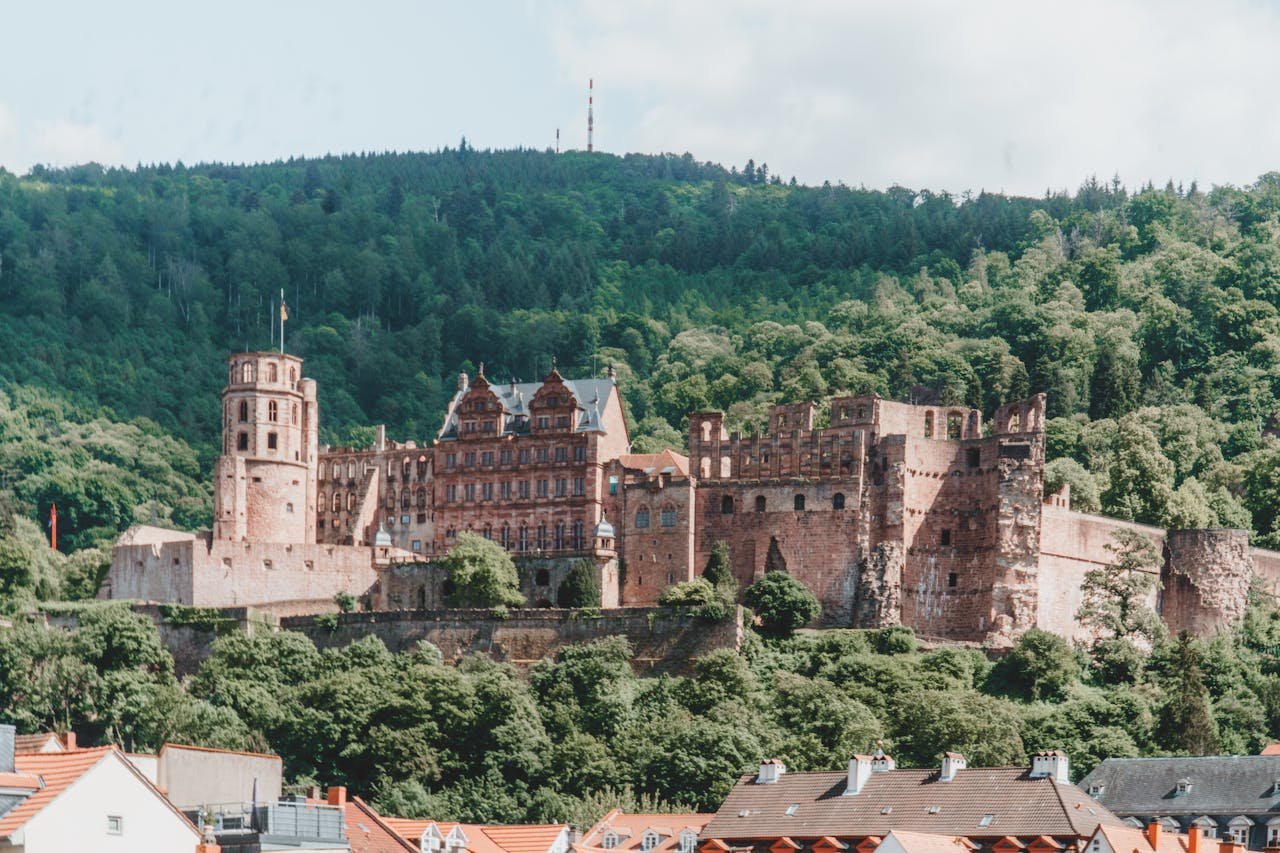Introduction
Definition and Overview of Casteò
Casteò, deeply ingrained in the societal structure of many regions, refers to a system of social stratification where individuals are categorized into distinct groups based on factors such as heredity, occupation, and social status. It serves as a framework for social organization and interaction, influencing various aspects of individuals’ lives.
Significance and Context
Casteò holds significant cultural, social, and economic importance in communities where it prevails. It shapes social dynamics, determines access to resources and opportunities, and influences cultural practices and traditions. Understanding the historical and contemporary context of Casteò is essential for comprehending its implications.
Historical Origins of Casteò
Ancient Roots and Development
Casteò finds its roots in ancient societies where social divisions were based on occupation and lineage. Over time, these divisions became more rigid, with specific castes occupying higher social positions than others. The caste system evolved alongside the development of civilizations, reflecting changes in societal structures and norms.
Evolution through Different Eras
Throughout history, the caste system underwent transformations influenced by socio-political changes, religious beliefs, and economic factors. From the Vedic period to the medieval era and colonial rule, the caste system adapted to new contexts, resulting in diverse manifestations across regions and time periods.
Casteò Structure and Hierarchy
Classification and Organization
Casteò is organized into hierarchical groups known as castes or jatis, each with its own set of privileges, responsibilities, and restrictions. These castes are often endogamous, meaning individuals marry within their own caste, reinforcing social boundaries and preserving caste identities.
Hierarchical Arrangement
The caste system is characterized by a strict hierarchical arrangement, with some castes considered superior to others. Brahmins, the priestly caste, traditionally occupy the highest position, followed by Kshatriyas (warriors), Vaishyas (merchants), and Shudras (laborers). Below these castes are the Dalits, historically marginalized and subjected to social discrimination.
Cultural and Social Implications of Casteò
Influence on Social Dynamics
Casteò profoundly influences social relations, interactions, and behaviors within communities. It dictates social norms, rituals, and customs, shaping individuals’ identities and roles within society. The caste system defines social hierarchies and power dynamics, impacting social mobility and opportunities for advancement.
Impact on Individual Lives
For individuals, caste identity can significantly impact life experiences and opportunities. Discrimination, stigma, and prejudice based on caste can limit access to education, employment, healthcare, and political representation. Caste-based inequalities perpetuate social stratification and hinder efforts towards social justice and equality.
Casteò in Modern Society
Persistence and Adaptation
Despite socio-economic changes and legal reforms, the caste system continues to influence social structures and relationships in modern society. While overt forms of caste discrimination have diminished, caste-based inequalities persist in various spheres of life, including education, employment, and access to resources.
Challenges and Controversies
The persistence of the caste system presents challenges and controversies in contemporary society. Debates surrounding affirmative action policies, caste-based reservations, and caste-based violence underscore the complexities and ethical dilemmas inherent in addressing caste-based inequalities. Finding solutions requires a nuanced understanding of caste dynamics and their implications.
Intersectionality with Religion
Relationship with Religious Beliefs
In many societies, caste and religion are closely intertwined, with religious texts and traditions often reinforcing caste distinctions. The hierarchical arrangement of castes is justified through religious doctrines and myths, legitimizing social inequalities and reinforcing social norms.
Religious Practices and Casteò
Religious practices and rituals often reflect and perpetuate caste distinctions, with certain castes granted preferential treatment or access to religious institutions and ceremonies. Caste-based discrimination may also manifest within religious communities, impacting social cohesion and inclusion.
Casteò in Politics and Governance
Political Representation
Caste plays a significant role in political dynamics, with caste affiliations shaping voting patterns, electoral alliances, and political rhetoric. Caste-based political parties and interest groups mobilize support along caste lines, influencing policy agendas and governance.
Policy Implications
Government policies and interventions aimed at addressing caste-based inequalities include reservations in education, employment, and political representation for marginalized castes. However, debates surrounding the efficacy and fairness of such policies persist, highlighting the complexities of caste politics and governance.
Economic Aspects of Casteò
Socio-economic Status
Caste significantly influences socio-economic status, with certain castes historically marginalized and disadvantaged in accessing economic opportunities and resources. Economic disparities along caste lines contribute to social inequalities and intergenerational poverty, perpetuating cycles of disadvantage.
Caste-based Professions
Historically, caste-based occupations and professions were determined by birth, with individuals belonging to specific castes relegated to certain trades or industries. While modernization and urbanization have led to some diversification, caste-based occupations and economic disparities persist, impacting social mobility and economic development.
Education and Casteò
Access to Education
Casteò affects access to education, with individuals from marginalized castes facing barriers such as discrimination, lack of resources, and socio-economic constraints. Efforts to promote inclusive education and affirmative action programs aim to address these disparities and enhance educational opportunities for all.
Educational Attainment and Casteò
Caste-based inequalities manifest in educational attainment, with individuals from higher castes often having better access to quality education and opportunities for academic advancement. Bridging the educational gap requires addressing systemic barriers and promoting equitable access to educational resources and opportunities.
Casteò and Marriage
Inter-caste Marriages
Inter-caste marriages challenge traditional caste boundaries and social norms, promoting social integration and cross-cultural understanding. However, they may also face resistance and social stigma, highlighting the complexities of navigating caste dynamics in personal relationships.
Social Stigma and Traditions
Casteò influences marriage practices and traditions, with families often preferring matches within the same caste to preserve social status and cultural identity. Social stigma surrounding inter-caste marriages reflects deep-rooted caste prejudices and societal expectations, posing challenges for individuals seeking to transcend caste barriers.
Casteò and Gender
Intersectionality with Gender Roles
Casteò intersects with gender roles and identities, influencing the experiences and opportunities of individuals based on their caste and gender. Women from marginalized castes often face intersecting forms of discrimination and oppression, exacerbating gender inequalities and limiting their socio-economic mobility.
Caste-based Discrimination
Casteò perpetuates gender disparities, with women from lower castes facing multiple forms of discrimination and violence. Caste-based discrimination intersects with gender discrimination, reinforcing social hierarchies and power dynamics that marginalize women from marginalized castes.
Cultural Traditions and Practices
Rituals and Customs
Casteò shapes cultural traditions and practices, with rituals and ceremonies often reflecting caste distinctions and social hierarchies. Caste-based customs govern various aspects of life, including marriage, childbirth, and death, reinforcing social norms and preserving caste identities.
Festivals and Celebrations
Festivals and celebrations play a significant role in reinforcing caste identities and fostering community cohesion. Caste-based festivals and rituals provide opportunities for social interactions and cultural exchange, reinforcing collective identities and reinforcing social bonds within caste-based communities.
Casteò in Literature and Media
Representation in Art and Literature
Casteò has been a recurring theme in literature, art, and media, reflecting its pervasive influence on society and culture. Literary works and artistic expressions often explore caste dynamics, social inequalities, and the human experience within caste-based societies, fostering dialogue and critical reflection.
Portrayal in Contemporary Media
In contemporary media, caste-related issues are increasingly portrayed through various platforms, including films, television, and digital media. While media representations can raise awareness and stimulate public discourse, they may also perpetuate stereotypes and reinforce existing prejudices, highlighting the need for nuanced and responsible storytelling.
Challenges and Critiques of Casteò
Social Inequality and Discrimination
Casteò perpetuates social inequality and discrimination, marginalizing certain groups and restricting opportunities for social mobility and advancement. The caste system’s rigid hierarchy reinforces social divisions and prejudices, hindering efforts towards equality and social justice.
Calls for Reform and Equality
Critiques of Casteò advocate for social reform and equality, challenging discriminatory practices and policies that perpetuate caste-based inequalities. Movements for caste equality seek to dismantle caste-based discrimination, promote social inclusion, and create a more equitable society for all individuals, irrespective of caste identity.
Movements for Casteò Equality
Social Reform Movements
Historically, various social reform movements have emerged to challenge the caste system and advocate for caste equality. Leaders such as Dr. B.R. Ambedkar and Mahatma Gandhi played pivotal roles in mobilizing communities and raising awareness about caste-based discrimination, paving the way for social change and reform.
Advocacy and Activism
Contemporary advocacy and activism continue to address caste-based inequalities and injustices, advocating for policy reforms, legal protections, and social initiatives to promote caste equality. Grassroots organizations and civil society movements work towards empowering marginalized communities and challenging entrenched caste-based discrimination in all its forms.
Government Policies and Interventions
Affirmative Action Programs
Government policies and interventions aim to address caste-based inequalities through affirmative action programs, reservations, and welfare schemes targeted at marginalized castes. These initiatives seek to provide opportunities for education, employment, and political representation, mitigating the effects of historical discrimination and promoting social inclusion.
Legal Frameworks
Legal frameworks and anti-discrimination laws provide avenues for addressing caste-based discrimination and ensuring the protection of rights and liberties for individuals from marginalized castes. Legal interventions play a crucial role in enforcing accountability, promoting equality before the law, and upholding human dignity and rights for all citizens.
Future Prospects and Trends
Changing Dynamics
The dynamics of casteò are evolving in response to socio-economic changes, urbanization, and globalization. While traditional caste structures persist, new forms of social mobility, identity formation, and cultural exchange are reshaping caste dynamics and relationships in contemporary society.
Prospects for Equality
Despite persistent challenges, there are prospects for greater equality and social justice in the future. Continued advocacy, policy reforms, and social initiatives aimed at dismantling caste-based discrimination and promoting inclusion hold the potential to create a more equitable and inclusive society for all individuals, irrespective of caste identity.
Global Perspectives on Casteò
Comparative Analysis
Casteò is not unique to specific regions or cultures but exists in various forms across the globe. Comparative studies of caste systems provide insights into common patterns, dynamics, and impacts, highlighting the universality of caste as a social phenomenon and the need for cross-cultural understanding.
International Awareness and Solidarity
International awareness and solidarity efforts play a crucial role in addressing caste-based inequalities and promoting human rights and dignity. Global initiatives, advocacy campaigns, and diplomatic engagements raise awareness about caste-related issues and foster solidarity with marginalized communities affected by caste discrimination.
Personal Reflections on Casteò
Experiences and Perspectives
Personal reflections offer insights into individuals’ lived experiences with casteò, highlighting the diverse ways in which caste identity shapes lives, aspirations, and relationships. Through personal narratives and testimonies, individuals share their struggles, triumphs, and hopes for a more just and inclusive society.
Call to Action
Casteò challenges us to confront deep-rooted prejudices, systemic inequalities, and injustices that perpetuate caste-based discrimination and exclusion. A call to action urges individuals, communities, and institutions to actively participate in efforts towards caste equality, social justice, and human rights, fostering a more compassionate and equitable world for all.
FAQs
What is Casteò?
Casteò refers to a system of social stratification where individuals are grouped into distinct categories based on factors such as heredity, occupation, and social status, influencing various aspects of their lives.
How has Casteò evolved over time?
Casteò has evolved through different historical eras, influenced by socio-political changes, religious doctrines, and economic factors, shaping societal structures and norms.
What are the implications of Casteò in modern society?
Casteò continues to influence social dynamics, economic opportunities, and cultural practices, perpetuating social inequalities and impacting individuals’ lives in diverse ways.
How do government policies address caste-based inequalities?
Government policies include affirmative action programs, reservations, and legal frameworks aimed at promoting social inclusion, addressing discrimination, and empowering marginalized castes.
What can individuals do to challenge caste-based discrimination?
Individuals can actively participate in advocacy, awareness-raising, and solidarity efforts, promoting social justice, equality, and human rights for all individuals, regardless of caste identity.



